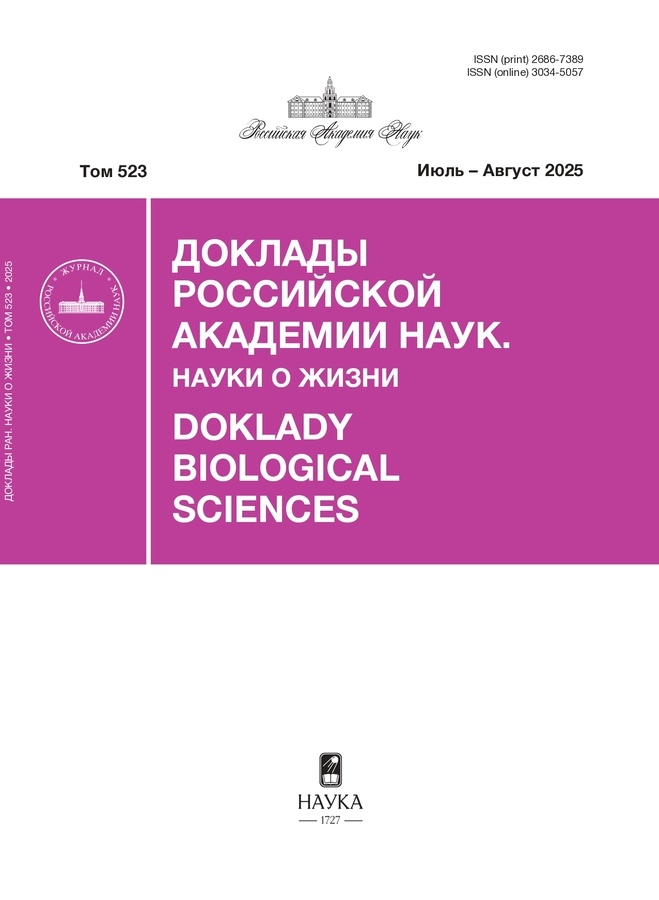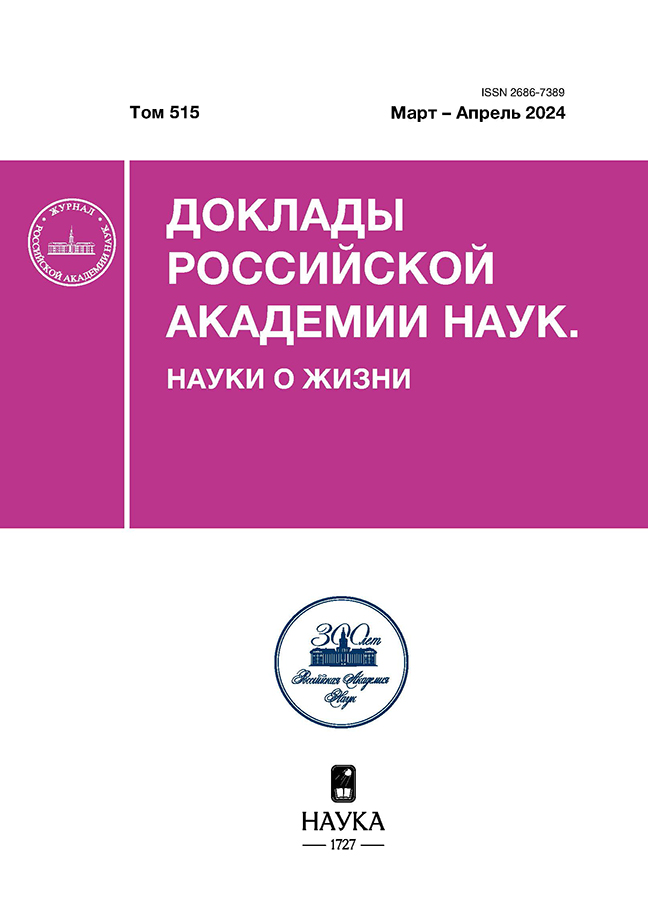Функциональная активность системы крови двух мигрирующих видов рукокрылых Урала
- Авторы: Ковальчук Л.А.1, Мищенко В.А.1,2, Черная Л.В.1, Снитько В.П.3, Большаков В.Н.1
-
Учреждения:
- ФГБУН “Институт экологии растений и животных” Уральского отделения Российской академии наук
- Федеральный научно-исследовательский институт вирусных инфекций “Виром” Роспотребнадзора
- Южно-Уральский федеральный научный центр минералогии и геоэкологии Уральского отделения Российской академии наук
- Выпуск: Том 515, № 1 (2024)
- Страницы: 71-75
- Раздел: Статьи
- URL: https://cijournal.ru/2686-7389/article/view/651445
- DOI: https://doi.org/10.31857/S2686738924020135
- EDN: https://elibrary.ru/WFAAFF
- ID: 651445
Цитировать
Полный текст
Аннотация
Представлены данные по исследованию функциональной активности системы крови мигрирующих видов фауны Урала: двухцветного кожана и лесного нетопыря. Многомерный непараметрический дисперсионный анализ параметров красной крови мигрирующих видов летучих мышей и оседлого вида прудовой ночницы показал статистически значимые видовые различия (р < 0.05). У рукокрылых отмечена определенная генетически детерминированная разнонаправленность в мобилизации механизмов аварийного регулирования лимфоидной системы крови.
Ключевые слова
Полный текст
Об авторах
Л. А. Ковальчук
ФГБУН “Институт экологии растений и животных” Уральского отделения Российской академии наук
Автор, ответственный за переписку.
Email: kovalchuk@ipae.uran.ru
Россия, Екатеринбург
В. А. Мищенко
ФГБУН “Институт экологии растений и животных” Уральского отделения Российской академии наук; Федеральный научно-исследовательский институт вирусных инфекций “Виром” Роспотребнадзора
Email: kovalchuk@ipae.uran.ru
Россия, Екатеринбург; Екатеринбург
Л. В. Черная
ФГБУН “Институт экологии растений и животных” Уральского отделения Российской академии наук
Email: kovalchuk@ipae.uran.ru
Россия, Екатеринбург
В. П. Снитько
Южно-Уральский федеральный научный центр минералогии и геоэкологии Уральского отделения Российской академии наук
Email: kovalchuk@ipae.uran.ru
Россия, Ильменский государственный заповедник, Миасс
В. Н. Большаков
ФГБУН “Институт экологии растений и животных” Уральского отделения Российской академии наук
Email: kovalchuk@ipae.uran.ru
академик
Россия, ЕкатеринбургСписок литературы
- Большаков В.Н., Орлов О.Л., Снитько В.П. Летучие мыши Урала. Екатеринбург: Академкнига, 2005.
- Снитько В.П., Снитько Л.В. Рукокрылые (Chiroptera, Vespertillionidae) Южного Урала (Челябинская область) // Зоологический журнал. 2017. Т. 96. № 3. С. 320–349.
- Снитько В.П. Рукокрылые (Chiroptera) Ильменского заповедника // Plecotus et al. 2001. № 4. C. 69–74.
- Alcalde J., Jiménez M., Brila I., et al. Transcontinental 2200 km migration of a Nathusius’ pipistrelle (Pipistrellus nathusii) across Europe // Mammalia. 2021. V. 85 (2). P. 161–163.
- Vasenkov D., Desmet J.F., Popov I., et al. Bats can migrate farther than it was previously known: a new longest migration record by Nathusius pipistrelle Pipistrellus nathusii (Chiroptera: Vespertilionidae) // Mammalia. 2022. V. 86 (5). P. 524–526.
- Rebelo H., Tarroso P., Jones G. Predicted impact of climate change on European bats in relation to their biogeographic patterns // Global Change Biology. 2010. V. 16 (2). P. 561–576.
- Frik W.F., Kingston T., Flanders J. A review of the major threats and challenges to global bat conservation // Annals of the New York Academy of Sciences. 2020. V. 1469 (1). P. 5–25.
- Rydell J., Bach L., Dubourg-Savage M.J., et al. Bat mortality at wind turbines in Northwestern Europe // Acta Chiropterologica. 2010. V. 12 (2). P. 261–274.
- Russo D., Ancillotto L. Sensitivity of bats to urbanization: a review // Mammalian Biology. 2015. V. 80 (3). P. 205–212.
- Frick W.F., Reynolds D.S., Kunz T.H. Influence of climate and reproductive timing on demography of little brown myotis Myotis lucifugus // Journal of Animal Ecology. 2010. V. 79 (1). P. 128–136.
- Amorim F., Mata V.A., Beja P., et al. Effects of a drought episode on the reproductive success of European free-tailed bats (Tadarida teniotis) // Mammalian Biology. 2015. V. 80. P. 228–236.
- Russo D., Salinas-Ramos V.B., Cistrone L., et al. Do we need to use bats as bioindicators? // Biology. 2021. V. 10 (8). P. 693–708.
- Ковальчук Л.А., Мищенко В.А., Черная Л.В. и др. Сезонная изменчивость иммуногематологических параметров периферической крови прудовой ночницы Myotis dasycneme (Boie, 1825), обитающей на Урале // Доклады РАН. Науки о жизни. 2023. Т. 510 (1). С. 278-282.
- Стрелков П.П. Оседлые и перелетные виды летучих мышей (Chiroptera) в Европейской части СССР. Сообщение 1 // Бюллетень МОИП. Отдел биологии. 1970. Т. 75 (2). С. 38–52.
- Yarri D. The Ethics of Animal Experimentation. Oxford: Oxford UniverPress, 2005.
- Chessel D., Dufour A.B., Thioulouse J. The ade 4 package-I: One-table methods // R News. 2004. V. 4. P. 5–10.
- Bandouchova H., Zukal J., Linhart P., et al. Low seasonal variation in greater mouse-eared bat (Myotis myotis) blood parameters // PLoS One. 2020. V. 15 (7): e0234784.
- Kovalchuk L., Mishenko V., Chernaya L., et al. Haematological parameters of pond bats (Myotis dasycneme Boie, 1825 Chiroptera: Vespertilionidae) in the Ural Mountains // Zoology and Ecology. 2017. V. 27 (2). P. 168–175.
- Jenne CN., Urrutia R., Kubes P. Platelets: bridging hemostasis, inflammation, and immunity // International Journal of Laboratory Hematology. 2013. V. 35 (3). P. 254–261.
- Scapigliati G., Buonocore F., Mazzini M. Biological activity of cytokines: an evolutionary perspective // Current Pharmaceutical Design. 2006. V. 12. P. 3071–3081.
Дополнительные файлы












